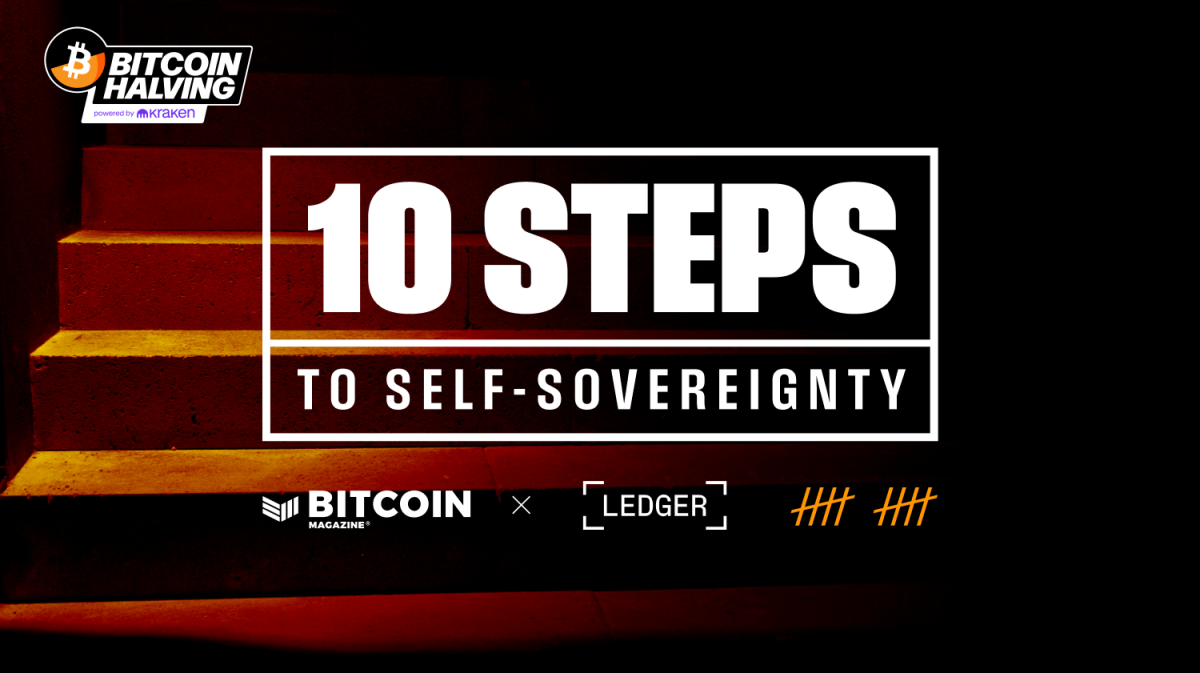Month: February 2024
Dollar gains in choppy trading, inflation meets expectations
Post Content
Wells Fargo and Bank of America’s Merrill Are Now Offering Spot Bitcoin ETFs To Clients
Bank of America Corp.’s Merrill Lynch and Wells Fargo & Co.’s brokerage unit have begun offering access to exchange-traded funds (ETFs) that directly invest in Bitcoin, according to Bloomberg Law.
JUST IN: Wells Fargo and Bank of America’s Merrill are offering spot #Bitcoin ETFs to wealth clients 🚀 pic.twitter.com/Lr3oD5XgrR
— Bitcoin Magazine (@BitcoinMagazine) February 29, 2024
The move by these banks reflects the growing interest among investors in gaining exposure to Bitcoin. Merrill Lynch and Wells Fargo are providing access to approved Bitcoin ETFs to select wealth management clients with brokerage accounts upon request, according to individuals familiar with the matter.
This development comes after spot Bitcoin ETFs had a record setting week in the US, with inflows of BlackRock’s ETF hitting $612 million yesterday. The decision by Merrill Lynch and Wells Fargo to offer these ETFs demonstrates their recognition of the increasing demand for Bitcoin investment options among their affluent clientele.
By providing access to Bitcoin ETFs, these banks are catering to the evolving investment preferences of their clients, who are seeking opportunities to diversify their portfolios and capitalize on the growth potential of Bitcoin. The availability of Bitcoin exposure through mainstream financial institutions like Merrill Lynch and Wells Fargo further legitimizes the Bitcoin market and underscores its integration into traditional finance.
Anduro: A Network of Sidechains
Marathon yesterday announced their Anduro layer two proposal. While there aren’t really any fundamentally new pieces or developments in the Anduro design, they do compose in slightly different ways compared to other existing sidechain systems such as RSK or Liquid/Elements.
Anduro is a federated model that makes use of a quorum, referred to as the “Collective” in the released documents. The main distinction between Anduro and other sidechain proposals is the explicit design based around the Collective operating and being capable of spinning up and managing multiple sidechains with different architectures. This is not so dissimilar from the concept of drivechains enabled a wider network of sidechains, rather than a singular one.
Anduro is also going to be merge mined, which like RSK (also using a federated peg), does not offer any type of added security for the bitcoin pegged into the sidechain held by the federation. It does however, also like RSK, provide POW security to other assets that might be issued on the sidechain not pegged in from the mainchain and custodied by the federation.
Peg And Consensus Model
The actual peg between the mainchain and the sidechain is fundamentally the same thing as Liquid, and in detail looks to be roughly identical in terms of structure and implementation. The Collective will be launched with 15 members as Functionaries, the entities actually handling the multisig keys involved with managing the peg, and 50 or more Contributors, which seem to be similar to Liquid partial members that can whitelist and initiate withdrawals from the sidechain(s) even though they are not active participants in processing those withdrawals.
Also like Liquid, Anduro will also use a formal organization to handle matters of governance. I.e. handling upgrades to the network, deciding on future changes to the membership set of the federation, and in general any issues that will come up in regards to the operation of the sidechains the Collective is operating. The federation’s security ultimately relies on jurisdictional diversity in order to maintain any type of censorship resistance or safety from fund confiscation even though a federation is composed of honest members.
The interesting part of the design here, is unlike RSK, the Collective plays an active role in the consensus process beyond facilitating the operations of the peg mechanism. In Anduro, the Collective actually comes to consensus on the block contents for the sidechain through a Byztanine Fault Tolerant (BFT) algorithm or round robin selection where a single member constructs the blocks for that round. They also periodically sign blocks to function as a checkpointing system to prevent reordering of anything in the historical past. Once signed and checkpointed, miners are incapable of reorging any sidechain blocks without the assistance of the Collective.
Both of these factors essentially function as a firewall between Miner Extractable Value opportunities and the miners. MEV is any opportunity available to miners where reordering transactions, such as front running orders on a decentralized exchange, can present an opportunity for that miner to earn extra revenue when they mine their next block. MEV has shown a tendency to increase centralization pressures for block producers in other networks it has become prevalent in. Because of the fact that the Collective is actually deciding the contents of sidechain blocks, and miners are simply committing to them with proof of work, the Collective acts as a shield against those centralizing pressures for block producers (in Bitcoin’s case miners) by taking on the role of actual block construction.
Long term Marathon states they intend to work towards trustless peg mechanisms and consensus mechanisms, specifically citing BitVM as an example of how this could be achievable. While this draws into question the ability to maintain the MEV protections the current architecture has in such a transition, it currently prevents MEV from presenting a risk of centralization pressures for miners. It’s also important to note that BitVM ultimately as designed with a prover-verifier model inherently requires defined participants to manage any funds locked in a BitVM peg. While it does radically improve the security model of the peg by allowing provable penalization of dishonest participants by a single member, massive changes to BitVM’s design itself would be necessary to completely remove the need for the equivalent of a federation.
Overall the architecture strikes a nice balance of implementing a variant of existing sidechain designs, while in its current iteration intentionally creating a sort of protective layers between the sidechains and miners when it comes to the risks of MEV.
The First Two
On launch Anduro will have support for two sidechain architectures, one based on Bitcoin, the other on Ethereum.
Coordinate: Coordinate is the Bitcoin sidechain variant. It will implement small changes to Bitcoin, including native support for asset issuance similar to Liquid, and is intending to cater towards Ordinals and token use cases such as BRC-20, and the primitive DeFi products and services that have built up around them.
Alys: Alys is the Ethereum sidechain variant, essentially just porting the Ethereum Virtual Machine and Solidity to a Bitcoin sidechain. The hope is that it can provide a new learning curve environment for Ethereum application developers to shift their focus towards building services and tools on top of Bitcoin.
BlackRock’s Spot Bitcoin ETF To Start Trading in Brazil Tomorrow
BlackRock’s spot Bitcoin exchange-traded fund (ETF) is poised to make its debut in Brazil tomorrow, according to a report from the largest financial market news platform in Brazil, InfoMoney. The launch follows the announcement by BlackRock that the Brazilian Depositary Receipts (BDRs) of its iShares Bitcoin Trust ETF (IBIT39) will begin trading on B3, Brazil’s stock exchange, on Friday, according to the report.
“Our digital asset journey has been underpinned by the goal of providing high-quality access vehicles to investors,” said Karina Saade, president of BlackRock in Brazil. “IBIT39 is a natural progression of our efforts over many years and builds on the fundamental capabilities we have established so far in the digital asset market.”
IBIT39 will initially be available to qualified investors, with retail access expected to follow in the coming “weeks.” The management fee for IBIT39 is set at 0.25%, with a one-year waiver and a reduction to 0.12% after reaching $5 billion in assets under management.
In the United States, where Bitcoin spot ETFs were cleared by regulators in January, BlackRock’s Bitcoin ETF has emerged as the most popular option, accumulating over $9 billion in assets since launch. According to Bloomberg data, BlackRock’s ETF attracted a record $612 million of inflows in a single day yesterday.
Despite the success of Bitcoin ETFs, Saade emphasized that BlackRock’s launch in Brazil and the United States does not constitute an endorsement of Bitcoin itself but rather a recognition of its relevance as an asset class. “Our goal is to serve our customers with safe and transparent products. We have no recommendation or any expectations regarding Bitcoin itself,” Saade explained.
Ledger and Bitcoin Magazine to Partner on “10 Steps to Self-Sovereignty”, Bitcoin Halving Livestream
NASHVILLE, February 29, 2024 – Ledger and Bitcoin Magazine are pleased to announce “10 Steps to Self-Sovereignty”, a new content partnership to help the public understand Bitcoin security tips and best practices and reduce their reliance on trusted third-parties. The content partnership will leverage Ledger’s global security expertise with Bitcoin Magazine’s editorial production and distribution to walk readers through ten ways and reasons to improve their Bitcoin security setup through self-custody.
A core value proposition of the Bitcoin network is the ability for participants to take custody and truly own their share of 21 million bitcoins through the use of cryptography. As Bitcoin continues to reach new audiences, it is more important than ever for users to understand the rationale behind self-custody as well as the security that it affords users. Through this content partnership, Ledger and Bitcoin Magazine aim to make self-custody a commonly understood and utilized practice for everyone engaging with Bitcoin.
The content partnership will consist of 10 guides on Bitcoin’s self-sovereign qualities, as well as a social media campaign by Bitcoin Magazine to highlight the benefits of self-custody for Bitcoin users. Topics include the basics of Bitcoin seed phrases, dos and don’ts of self-custody, and the fundamentals driving forward Bitcoin as a store of value. The series will offer education on self-custody fundamentals and and best-practices for individuals to safely secure their Bitcoin
“10 Steps to Self-Sovereignty” comes in conjunction with Ledger’s sponsorship of the Bitcoin Halving Livestream as the Official Mempool Sponsor, delivering a live view of Bitcoin’s mempool complete with utilization statistics. Bitcoin’s fourth halving is currently projected to occur April 20th, 2024. Viewers will be able to follow along and celebrate the Bitcoin Halving Livestream at www.bitcoinhaving.com.
“Ledger has the number one secure Bitcoin wallet in the world,” said Ariel Wengroff, VP of Communications at Ledger. “Ledger would not exist without Bitcoin. We must ensure everyone has access to secure self-custody, and we’re proud to work with the excellent team at Bitcoin Magazine to ensure education is accessible to everyone.”
Bitcoin Magazine Editor-in-Chief Mark Goodwin: “Self-custody is the core of what enables bitcoin to exist as a better alternative. We are excited to deliver wide-reaching education to help our readers to better understand the fundamentals of bitcoin self-custody through each of these 10 steps.”
Combining education with the unparalleled sovereignty offered by self-custody, Bitcoin Magazine and Ledger are committed to fostering a more informed and empowered user base of bitcoin holders in anticipation of the 2024 halving.
About Bitcoin Magazine
Bitcoin Magazine, the world’s first publication covering Bitcoin, serves its international readership with innovative ideas, breaking news, and global impact at the intersection of finance, technology, and Bitcoin. Operating from Nashville, Tennessee, Bitcoin Magazine is published by BTC Media. For the latest in Bitcoin news, visit BitcoinMagazine.com.
About Ledger
Founded in Paris in 2014, LEDGER is a global platform for digital assets and Web3. Ledger is already the world leader in Critical Digital Asset security and utility. With more than 6M devices sold to consumers in 200 countries and 10+ languages, 100+ financial institutions and brands as customers, 20% of the world’s crypto assets are secured, plus services supporting trading, buying, spending, earning, and NFTs. LEDGER’s products include: Ledger Stax, Nano S Plus, Nano X hardware wallets, LEDGER Live companion app, and Ledger Enterprise. With its ease of use, LEDGER allows a user to begin investing in digital assets and ultimately, achieve financial freedom in a safe and stress-free environment.
EIA Emergency Survey Preliminary Injuction Hearing Canceled Yesterday
Yesterday we were supposed to have a hearing on the preliminary injunction in the Texas Blockchain Council v. Department of Energy case. But, as often happens in litigation, things change quickly. Tuesday the judge entered an order canceling today’s hearing based on the parties reaching an “agreement-in-principle” on the overall dispute. This agreement must be finalized and filed by Friday, March 1st.
Speculation time.
What could this mean? One element of the standard for a Temporary Restraining Order (TRO), and a preliminary injunction, is that the party requesting it has to show that they are “likely to succeed on the merits.” This means that the judge has to believe that, not only is success possible, but more likely than not. Here, the judge already agreed that “that Plaintiffs are likely to succeed in showing that the facts alleged by Defendants to support an emergency request fall far short of justifying such an action.” And that the Government’s action was arbitrary, capricious, or abused their discretion.
Losing the TRO, while not dispositive, is a big red flag. The Government does not like to lose, and once it has lost on this metric, it’s very likely that they already know they will lose on the following motions: the preliminary injunction and the permanent injunction.
One problem there is discovery. As part of the process of proving the case, the Plaintiffs get to request internal communications and other materials that might show an abuse of discretion or undue influence. The Energy Information Administration has only used emergency data collection authority in a handful of actual emergencies, such as an emergency survey in response to the 2021 Colonial Pipeline Cyberattack.
Given the context of Senator Warren and the Biden Administration’s continued attacks on Bitcoin and Bitcoin mining, is there any reason to believe that there aren’t unflattering emails or communications showing undue influence between those offices and the EIA? What else could have caused a historically cautious and respected agency to suddenly put out such slipshod work as the EIA-862, which was then rubber stamped by the President’s own Office of Management and Budget in clear technical violation of their internal standards?
It is not like this kind of undue influence hasn’t happened before… look at Custodia Bank’s lawsuit, for instance, where “perhaps the most stunning fact that would never have seen the light of day but for discovery is this: in the wake of FTX’s collapse and a mysterious briefing to Vice-Chair Barr concerning Custodia’s membership and master account applications, Board staff edited and rewrote key parts of an internal Kansas City Fed memo … Discovery reveals that the Board was deeply intertwined in the outcome of Custodia’s master account request. That level of involvement is not consistent with the notion of unfettered Reserve Bank discretion.” Page 54 of Custodia’s December 22, 2023 Brief for Judgment as a Matter of Law.
While we await more information, it seems clear that any voluntary concession by the Government here reveals some combination of realization that they exhibited either manifest incompetence, or that discovery would bear out significant undue influence on the process.
This is a guest post by Colin Crossman. Opinions expressed are entirely their own and do not necessarily reflect those of BTC Inc or Bitcoin Magazine.
Japan issues fresh warning against excessive yen moves
Post Content
Asia FX muted ahead of US inflation, yen surges on BOJ hawk talk
Post Content
Japanese yen strengthens sharply as BOJ member calls for policy overhaul
Post Content
Dollar bounces before inflation data, bitcoin hits two-year high
Post Content








